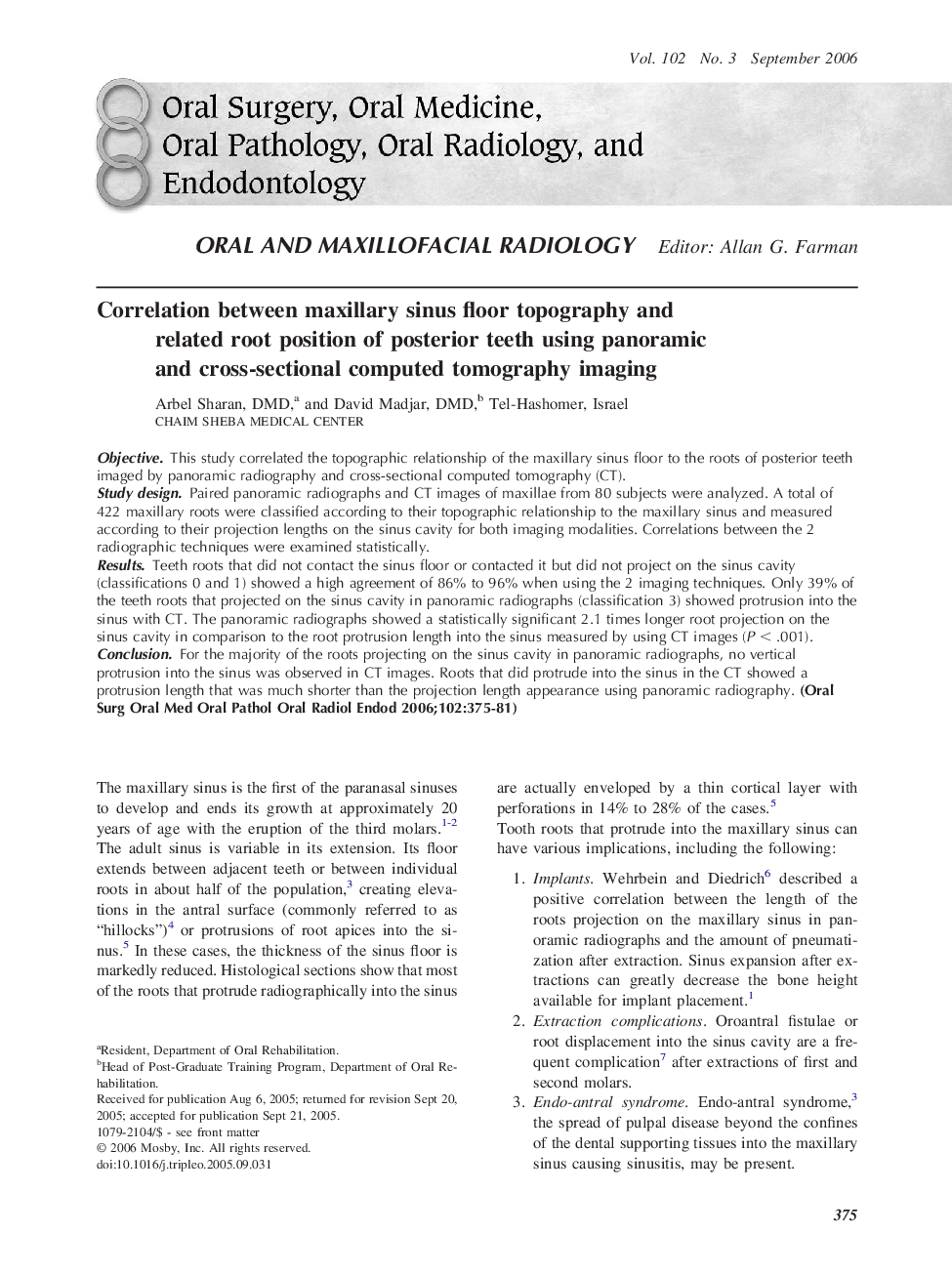| Article ID | Journal | Published Year | Pages | File Type |
|---|---|---|---|---|
| 3169925 | Oral Surgery, Oral Medicine, Oral Pathology, Oral Radiology, and Endodontology | 2006 | 7 Pages |
ObjectiveThis study correlated the topographic relationship of the maxillary sinus floor to the roots of posterior teeth imaged by panoramic radiography and cross-sectional computed tomography (CT).Study designPaired panoramic radiographs and CT images of maxillae from 80 subjects were analyzed. A total of 422 maxillary roots were classified according to their topographic relationship to the maxillary sinus and measured according to their projection lengths on the sinus cavity for both imaging modalities. Correlations between the 2 radiographic techniques were examined statistically.ResultsTeeth roots that did not contact the sinus floor or contacted it but did not project on the sinus cavity (classifications 0 and 1) showed a high agreement of 86% to 96% when using the 2 imaging techniques. Only 39% of the teeth roots that projected on the sinus cavity in panoramic radiographs (classification 3) showed protrusion into the sinus with CT. The panoramic radiographs showed a statistically significant 2.1 times longer root projection on the sinus cavity in comparison to the root protrusion length into the sinus measured by using CT images (P < .001).ConclusionFor the majority of the roots projecting on the sinus cavity in panoramic radiographs, no vertical protrusion into the sinus was observed in CT images. Roots that did protrude into the sinus in the CT showed a protrusion length that was much shorter than the projection length appearance using panoramic radiography.
